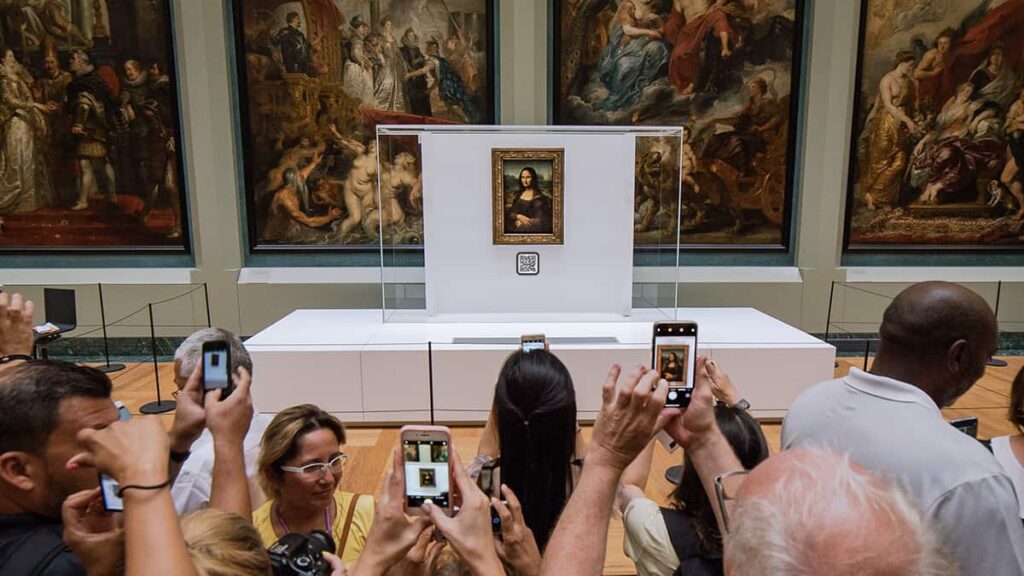Museums have long been considered to be the guardians of our cultural heritage, preserving and displaying artifacts and artworks from different periods of history. However, the traditional method of displaying exhibits with minimal information has left many visitors feeling disconnected and unengaged with the exhibits. To address this problem, museums have started using QR code-based systems to provide additional information to visitors about the exhibits. In this article, we will discuss the benefits of using a QR code-based system in museums.
First, a QR code-based system makes information about exhibits easily accessible to visitors. The system allows visitors to scan a QR code displayed next to an exhibit using their smartphones, which leads them to a webpage containing detailed information about the exhibit. This information can include the history, origin, and significance of the exhibit, as well as its cultural and historical context. Visitors can also access audio and video content related to the exhibit, which can enhance their understanding and appreciation of the exhibit. With a QR code-based system, visitors no longer have to rely on limited text panels or audio guides, which can be difficult to navigate and may not provide comprehensive information.
Second, a QR code-based system enhances the visitor experience by providing a more immersive and interactive experience. The additional information provided through QR codes can help visitors to better understand and appreciate the exhibits they are viewing. For example, a museum might provide a video of an expert explaining the significance of an exhibit, or a 3D rendering of a historical object that is too delicate or valuable to be displayed. These types of interactive experiences can help visitors to better connect with the exhibits and create a more memorable experience.
Third, a QR code-based system can help museums to reach a wider audience. By providing additional information through QR codes, museums can cater to different levels of interest and expertise. For example, a casual visitor might only be interested in basic information about an exhibit, while a more experienced or knowledgeable visitor might want more detailed information. By providing this information through QR codes, museums can cater to both types of visitors. Additionally, museums can use QR codes to provide information in multiple languages, which can be particularly useful for international visitors.
Fourth, a QR code-based system can provide museums with valuable data about their visitors. By tracking which QR codes are scanned and when, museums can gain insights into which exhibits are the most popular and what types of information visitors are most interested in. This data can be used to improve the museum experience, by creating more engaging exhibits or developing new content that caters to visitors’ interests. Additionally, museums can use this data to understand which exhibits are the most effective at attracting visitors and adjust their marketing and outreach efforts accordingly.

Fifth, a QR code-based system can be cost-effective for museums. Traditional methods of providing information about exhibits, such as text panels or audio guides, can be expensive to produce and maintain. By contrast, QR codes can be created and updated relatively easily and at a lower cost. Additionally, QR codes can be reused for multiple exhibits, providing additional cost savings.
Finally, a QR code-based system can provide museums with a way to engage visitors beyond the physical exhibit. By providing additional information and interactive content through QR codes, museums can extend the visitor experience beyond the physical exhibit space. For example, a museum might provide a virtual tour of an exhibit or offer additional resources related to the exhibit online. This can help to keep visitors engaged with the museum even after they have left the physical exhibit space.
In conclusion, a QR code-based system can provide many benefits to museums, including easy access to information for visitors, enhanced visitor experiences, wider reach, valuable data, cost savings, and extended engagement. By implementing a QR code-based system, museums can improve the overall visitor experience and provide visitors with a more engaging and memorable experience. As technology
Schedule A Live Demo
Have a member of the 42Kites team walk you through a live demo over Zoom. Enter your contact information below and we'll set up a time that works for you.
